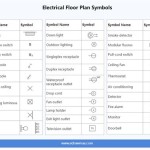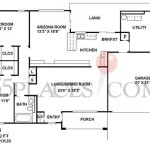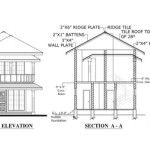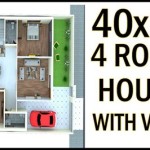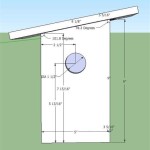```html
6 Bedroom House Plans In Kerala
Kerala, known for its lush landscapes and rich cultural heritage, presents unique architectural challenges and opportunities. The design of homes in this region often reflects a blend of traditional aesthetics and modern functionality. When considering a 6-bedroom house plan in Kerala, several factors come into play, including land availability, family size, climatic conditions, and budget considerations. These elements influence the overall design and layout of the house, dictating the placement of bedrooms, living spaces, and other essential amenities.
The need for a 6-bedroom house frequently arises from extended family living arrangements, the desire for guest rooms, or the intention to create designated spaces for specific activities such as home offices or recreational areas. Consequently, the careful planning and execution of the floor plan are paramount to ensure comfortable and efficient living.
Key Considerations for 6-Bedroom House Plans in Kerala
Designing a 6-bedroom house in Kerala requires careful attention to several crucial aspects. These considerations ensure the house is not only aesthetically pleasing but also practical and suitable for the specific needs of its occupants.
Space Optimization and Layout
One of the primary challenges in designing a large house is optimizing the use of available space. A well-designed layout should minimize wasted space while maximizing functionality. This involves strategically placing bedrooms, living areas, and service areas to create a seamless flow throughout the house. Open floor plans connecting the living room, dining area, and kitchen are popular in modern Kerala house designs, promoting a sense of spaciousness and facilitating social interaction.
Privacy is also a crucial consideration, particularly with multiple bedrooms. The plan should incorporate strategies to ensure that each bedroom offers adequate privacy for its occupants. This might involve separating master bedrooms from guest rooms or positioning bedrooms away from high-traffic areas such as the living room.
The orientation of the house on the plot is also significant. In Kerala's tropical climate, minimizing direct sunlight exposure on the western side of the house can help reduce heat gain. Strategic placement of windows and the use of shading devices are essential for maintaining a comfortable indoor temperature.
Climate-Responsive Design
Kerala's climate is characterized by high humidity and rainfall. Therefore, climate-responsive design is not merely an option but a necessity. This entails incorporating features that mitigate the effects of the climate and promote natural ventilation and cooling.
Traditional Kerala architecture incorporates several elements that are well-suited to the climate. Sloping roofs with wide eaves provide protection from rain and sun. Courtyards are often included to promote natural ventilation and bring light into the interior spaces. Cross-ventilation, achieved through strategically placed windows and openings, is crucial for reducing humidity and maintaining a comfortable indoor environment.
Modern construction techniques and materials can also be used to enhance the climate-responsiveness of the house. Using insulated roofing materials can reduce heat transfer, while incorporating rainwater harvesting systems can conserve water. Passive cooling strategies, such as using light-colored exterior finishes to reflect sunlight, are also beneficial.
Integration of Traditional and Modern Elements
Kerala architecture is renowned for its unique blend of traditional and modern elements. Incorporating these elements into a 6-bedroom house plan can create a visually appealing and culturally relevant home.
Traditional Kerala houses often feature intricate woodwork, such as carved doors, windows, and pillars. These elements can be incorporated into the design to add a touch of elegance and cultural authenticity. The use of natural materials, such as wood, stone, and clay tiles, is also characteristic of Kerala architecture and can contribute to the overall warmth and character of the house.
At the same time, modern design principles can be integrated to enhance functionality and comfort. This might involve using modern appliances, incorporating energy-efficient lighting, and designing spaces that are adaptable to changing needs. Striking a balance between traditional aesthetics and modern functionality is key to creating a house that is both beautiful and practical.
Floor Plan Considerations for a 6-Bedroom House
The floor plan is the blueprint for the entire house, and its design significantly impacts the overall living experience. When designing a 6-bedroom house, careful consideration must be given to the layout and arrangement of the various spaces.
A typical 6-bedroom house plan in Kerala might include two or three bedrooms on the ground floor and the remaining bedrooms on the upper floor. This arrangement allows for a clear separation between living areas and private sleeping quarters. The ground floor typically houses the main living room, dining area, kitchen, and one or two bedrooms, often designed for elderly family members or guests. The upper floor usually contains the master bedroom, additional bedrooms, and a family lounge or study area.
Each bedroom should be adequately sized to accommodate a bed, wardrobe, and other essential furniture. The master bedroom typically includes an attached bathroom and dressing area. Other bedrooms may share a common bathroom. The plan should also incorporate sufficient storage space, such as built-in closets and cabinets, to minimize clutter and maximize living space.
The placement of the kitchen is another important consideration. A well-designed kitchen should be functional and efficient, with ample counter space and storage. It should also be conveniently located near the dining area and ideally have access to a service entrance for deliveries. The kitchen can be designed as an open kitchen connected to the dining area or as a separate, enclosed space, depending on the preferences of the homeowners.
Material Selection and Construction Techniques
The selection of materials and construction techniques plays a crucial role in the durability, aesthetics, and energy efficiency of the house. Choosing the right materials and employing appropriate construction methods is essential for creating a house that is both structurally sound and visually appealing.
In Kerala, laterite stone is a commonly used building material due to its availability and durability. Laterite is a porous stone that provides good insulation and helps regulate indoor temperature. Concrete is also widely used, particularly for the foundation, columns, and beams of the house. Using reinforced concrete construction provides structural integrity and ensures the house can withstand seismic activity and heavy rainfall.
For roofing, clay tiles remain a popular choice due to their aesthetic appeal and ability to provide good insulation. However, modern alternatives such as concrete tiles and metal roofing are also gaining popularity due to their durability and ease of installation. Choosing roofing materials that are resistant to water damage and can withstand the harsh tropical climate is crucial.
For interior finishes, natural materials such as wood, stone, and bamboo are often preferred. Wood is commonly used for flooring, doors, and windows, while stone can be used for cladding and landscaping. Bamboo is a sustainable and versatile material that can be used for various purposes, including flooring, wall paneling, and furniture. The choice of materials should reflect the overall design aesthetic and contribute to the comfort and functionality of the house.
Cost Estimation and Budget Planning
Building a 6-bedroom house in Kerala involves a significant financial investment. Therefore, careful cost estimation and budget planning are essential for ensuring the project stays within budget and is completed successfully.
The cost of construction depends on various factors, including the size of the house, the materials used, the complexity of the design, and the labor costs. It is advisable to obtain detailed cost estimates from multiple contractors before finalizing the design and starting construction. The cost estimate should include the cost of materials, labor, permits, and other associated expenses.
It is also important to factor in contingency funds to cover unforeseen expenses or unexpected changes in the design. A contingency fund of 5-10% of the total construction cost is generally recommended. Regularly monitoring the construction progress and comparing the actual expenses with the estimated budget is crucial for staying on track and avoiding cost overruns.
Exploring financing options, such as home loans, can help make the project more affordable. It is advisable to compare the interest rates and terms offered by different lenders before choosing a financing option. Careful budget planning and cost management are essential for ensuring the successful completion of the 6-bedroom house project.
```
6 Bedroom Luxury House Design Kerala Home And Floor Plans 580 Architectural Mediterranean Style

6 Bedroom House Plans N Style Double Story

6 Bedroom Luxurious Colonial House Plan Kerala Home Design Plans Luxury

6 Bedroom Modern Luxury Home Plan Kerala House Design Plans Traditional

6 Bedroom Colonial Model House Plan 343 Sq M Kerala Home Design Bloglovin

Latest Home Designs In Kerala 6 Bedrooms House Floor Plan Traditional

Luxury Flat Roof 6 Bedroom House Rendering Small Design Architecture Contemporary Exterior

Kerala Style House Plans Low Cost Small In With Photo

Astounding 6 Bedroom House Plan Plans Beautiful
Colonial Type Luxury Residence With 6 Bedroom Kerala Home Design Bloglovin

